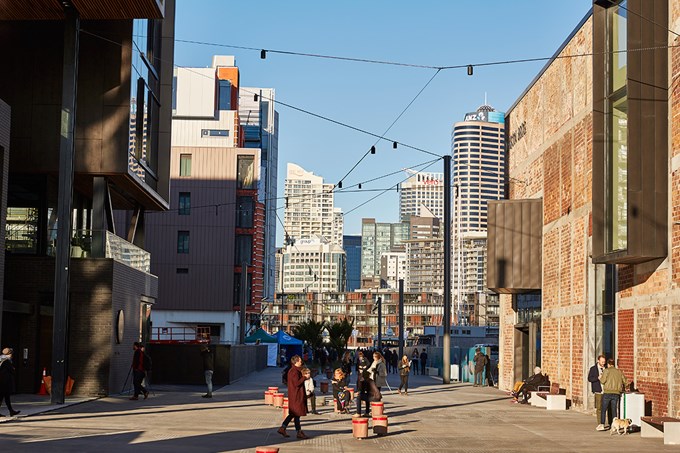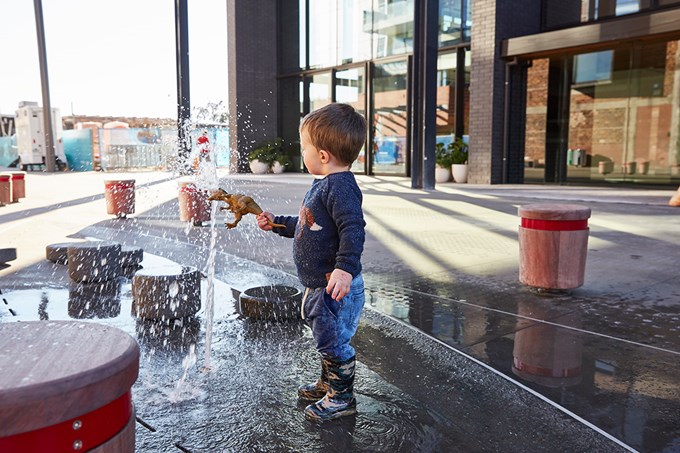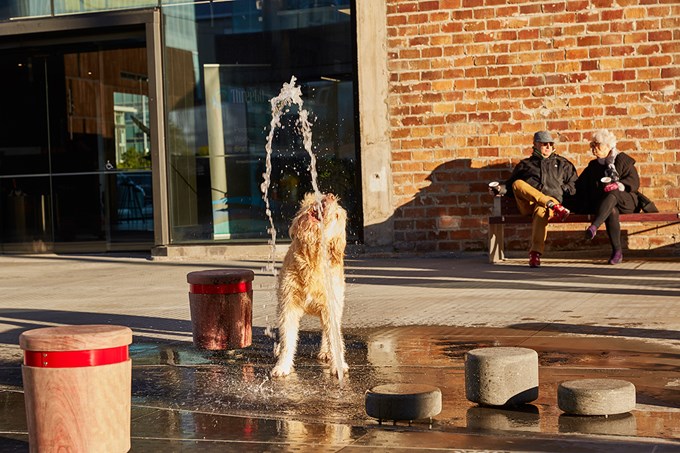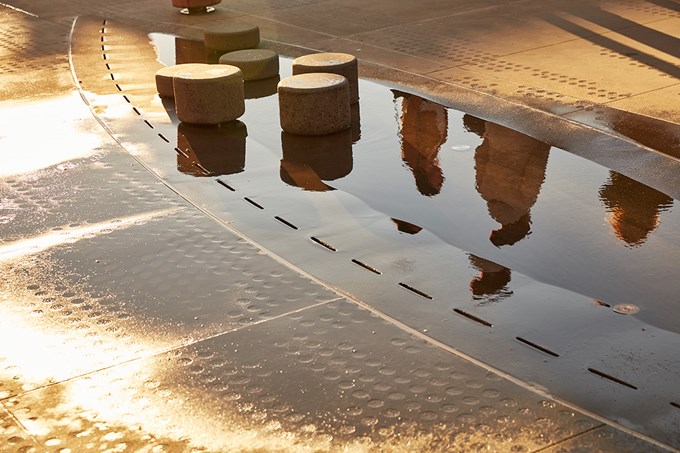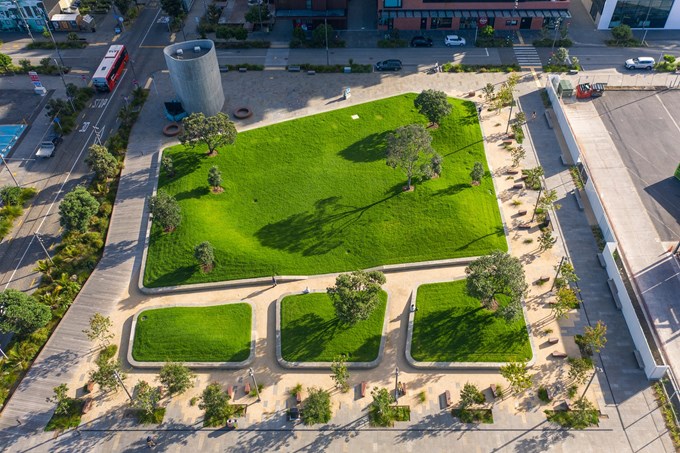Wynyard Quarter has lived many lives.
It was once a tidal space and a mahinga kai (food gathering place), then reclaimed to become an industrial area and working wharf, and now it's a growing waterfront neighbourhood.
Each time you visit Wynyard Quarter it will deliver something new to see, learn and experience. That’s the joy of visiting a precinct halfway through its development journey.
The new public spaces you’ll discover around Wynyard Quarter are a welcome change from the once industrial land inaccessible to the public. Each new location has its own story:
Silo Park Extension
The much-loved Silo Park community space has extended to encompass the area between the Gantry and water's edge. It was previously a space that stored bulk liquids like cooking oil, molasses and whiskey that arrived in Auckland by ships.
Acknowledging the context of the site before, elements of its history have been retained as a nod to Wynyard Quarter’s waterfront identity. Incorporated within the space are nine of the original stainless steel silos and the existing exchanger (valve) pit that all liquids used to pass through when being offloaded from the boats to the silos.
Mana whenua identity is strongly reflected throughout the space’s design with the key feature being a waka-inspired pavilion called Te Nukuao designed by artist Tessa Harris, which provides shelter from the elements; and the area’s surface design being curated by Reuben Kirkwood – both artists are of Ngāti tai ki Tāmaki.

Amey Daldy Park
Amey Daldy Park is a pocket park along the edge of Daldy Street Linear Park, a green connection between Victoria Park and the waterfront. Previously an industrial site for storage tanks, it is now a contemporary urban park that serves as a backyard for Wynyard Quarter’s residents, workers and visitors.
Significant enabling infrastructure is integrated throughout the park including a Watercare pump station that symbolises the sites industrial history.
The park was named after the suffragist Amey Daldy, who was a prominent voice of the suffragist movement in Auckland. She was a woman of radical views for her age and time, who campaigned fervently and fearlessly for women's rights and for social justice. Amey left many legacies in her wake, and this park in her namesake is now one of them.
Ūrunga Plaza
Ūrunga Plaza and the adjacent promenade wrapping around the Park Hyatt Auckland Hotel was previously the site of the old Emirates Team New Zealand base, and prior to that, a working wharf and timber yard. The transformation from industrial use to a public space is an exciting and welcomed milestone.
The public space was designed with the intention for visitors to meet under the canopies of native trees along the water’s edge.
The woodstack shaped seating is inspired by the timber milling history of the site, and they’re made with recycled and sustainably sourced timber arranged in a wave-like formation to create a dynamic and engaging place for people to sit and enjoy views to the harbour and city.
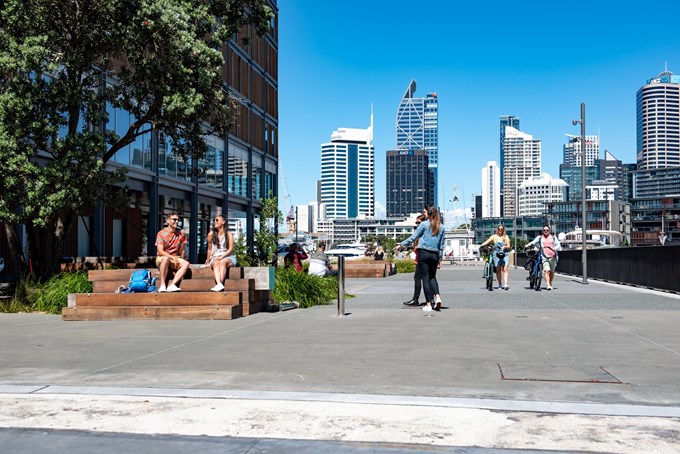
Tīramarama Way
Tīramarama Way means to glimmer, shine and light the way and it is the name of the east to west laneway connecting Halsey, Daldy and Beaumont Streets.
Prior to the reclamation of Wynyard Quarter, this location was near the original shoreline of the Waitematā Harbour and a mahinga kai (a food gathering place).
To represent the original shoreline of the waterfront, more than 480,000 dots are sandblasted into the laneway. Shining above is a light display that maps out stars and constellations that are important to Māori astronomy, including Te Punga – Southern Cross, and Matariki.
Many of the laneway’s design features reflect a commitment to supporting sustainability, with burrow planters acting as small rain gardens, a real-life garden beneath the ground that allows the nikau grove and other greenery to flourish, and grooves carved into the laneway to form puddles that rise and fall with the tides.
Photo credits: Eke Panuku.

